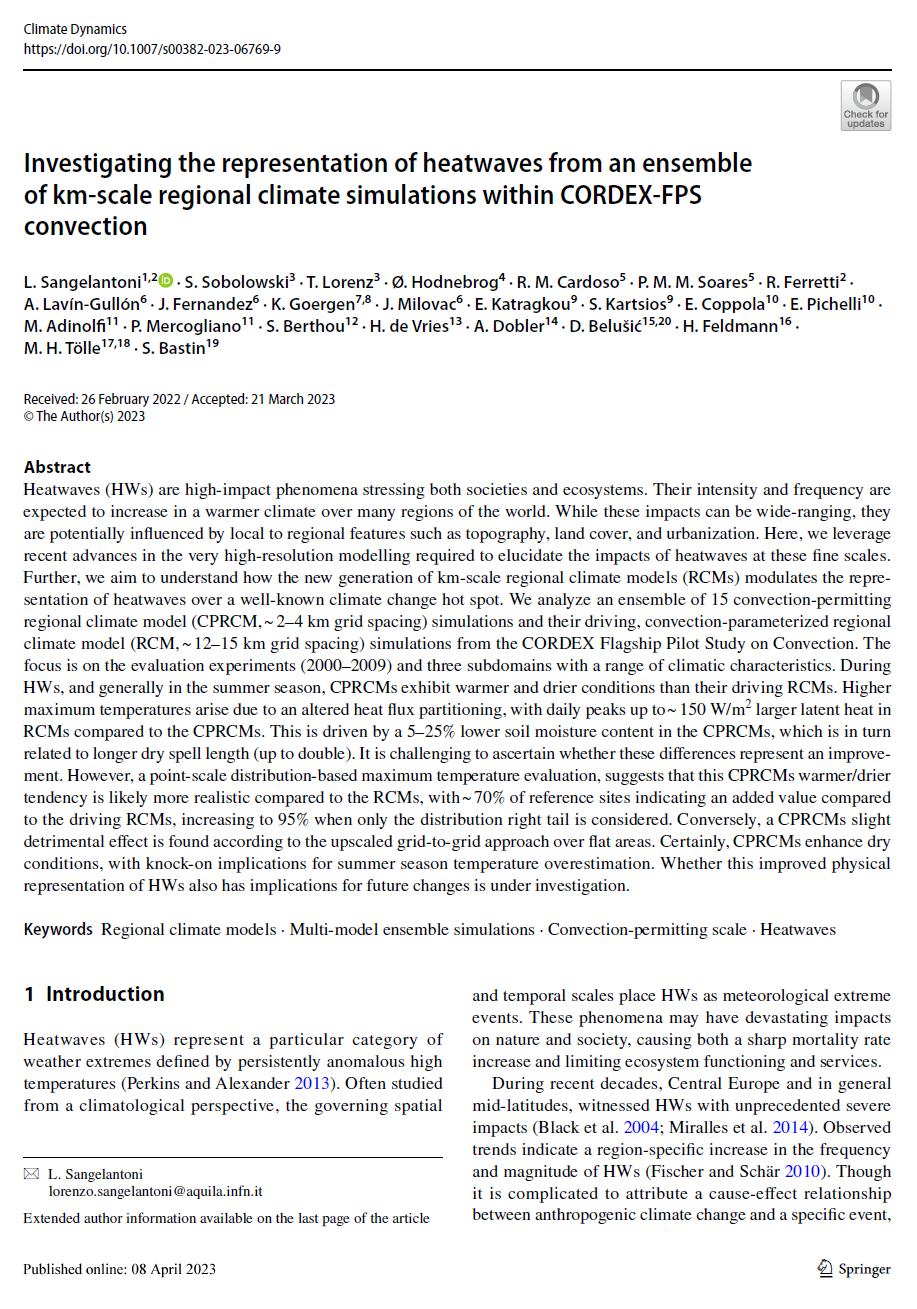Heatwaves (HWs) are high-impact phenomena stressing both societies and ecosystems. Their intensity and frequency are expected to increase in a warmer climate over many regions of the world. While these impacts can be wide-ranging, they are potentially influenced by local to regional features such as topography, land cover, and urbanization. Here, we leverage recent advances in the very high-resolution modelling required to elucidate the impacts of heatwaves at these fine scales. Further, we aim to understand how the new generation of km-scale regional climate models (RCMs) modulates the representation of heatwaves over a well-known climate change hot spot. We analyze an ensemble of 15 convection-permitting regional climate model (CPRCM, ~ 2–4 km grid spacing) simulations and their driving, convection-parameterized regional climate model (RCM, ~ 12–15 km grid spacing) simulations from the CORDEX Flagship Pilot Study on Convection. The focus is on the evaluation experiments (2000–2009) and three subdomains with a range of climatic characteristics. During HWs, and generally in the summer season, CPRCMs exhibit warmer and drier conditions than their driving RCMs. Higher maximum temperatures arise due to an altered heat flux partitioning, with daily peaks up to ~ 150 W/m2 larger latent heat in RCMs compared to the CPRCMs. This is driven by a 5–25% lower soil moisture content in the CPRCMs, which is in turn related to longer dry spell length (up to double). It is challenging to ascertain whether these differences represent an improvement. However, a point-scale distribution-based maximum temperature evaluation, suggests that this CPRCMs warmer/drier tendency is likely more realistic compared to the RCMs, with ~ 70% of reference sites indicating an added value compared to the driving RCMs, increasing to 95% when only the distribution right tail is considered. Conversely, a CPRCMs slight detrimental effect is found according to the upscaled grid-to-grid approach over flat areas. Certainly, CPRCMs enhance dry conditions, with knock-on implications for summer season temperature overestimation. Whether this improved physical representation of HWs also has implications for future changes is under investigation.


